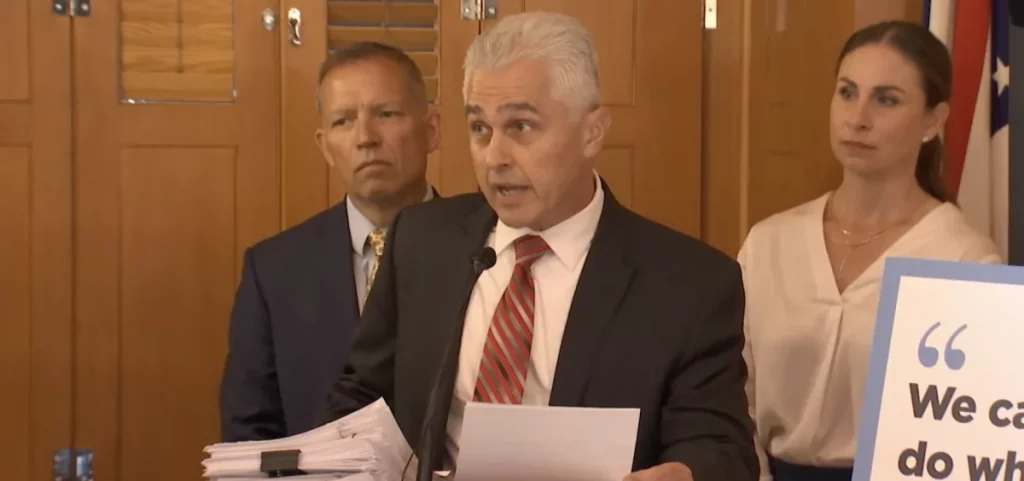News
An Ohio anti-vouchers coalition says state GOP leaders are trying to intimidate their school districts
By: Jo Ingles | Statehouse News Bureau
Posted on:
COLUMBUS, Ohio (Statehouse News Bureau) — Ohio public school districts that support a lawsuit against the state over private school vouchers say Republican leaders are bullying and intimidating them.
According to A.J. Calderone, superintendent of LaBrae Local Schools in Trumbull County and a member of the coalition Vouchers Hurt Ohio, Senate President Matt Huffman (R-Lima) and Auditor Keith Faber (R-Ohio) wrote to all of Ohio’s public school districts earlier this summer asking for information about individual school districts that were involved in the lawsuit against the state.
Calderone said the letter was unnecessary because the requested information would have been available through the state’s Legislative Service Commission.
“The LSC was the appropriate state agency for Huffman to turn to if he wanted that information,” Calderone said at a Tuesday press conference. “This was not about fact finding. This was about harassment, intimidation and bullying.”
The implication, he said, was that districts supporting the lawsuit would face some sort of retribution. That’s why the schools involved in the suit are now asking to depose Huffman as part of their lawsuit, Calderone said..
“We are attempting to depose Sen. Huffman and he has hired attorneys to quash that effort,” Calderone said.
A spokesman for Huffman and the Republican Senate caucus, John Fortney, defended Huffman’s actions.
“Parents would never dream that their school district’s tax dollars are going to fund a special interest lawsuit targeting their families,” Fortney said.
Doing so, Fortney said, shows “exactly how low this group will go.”
Requests for comment from Faber have not been answered.

A little about the voucher lawsuit
In January 2022, the coalition of public K-12 school districts filed a lawsuit over the way the state uses taxpayer-funded vouchers for private schools through the EdChoice program. Initially five school districts were part of the suit, but Calderone said that’s grown to around 250.
At the heart of the lawsuit is whether the state is improperly using money meant for public schools to fund private schools. Scott DiMauro, president of the Ohio Education Association, said that’s what’s happening.
“The tax dollars going to private school vouchers come from the same line item in the budget that funds public schools. A dollar more for private school vouchers is a dollar less for public schools,” DiMauro said.
A recent expansion of the EdChoice voucher program in the new two-year state budget allows a family of four earning $135,000 a year to qualify for a full voucher. And families earning more than that qualify for smaller vouchers. Republican lawmakers who passed the expansion said it is fair to all Ohio kids because it allows parents to make the choice of where to educate their children.
“We want to provide parents throughout the entire state the opportunity to decide for themselves where their child should be educated,” Sen. Matt Dolan (R-Chagrin Falls) said when the Senate version of the budget, with the expansion added, passed in June.
Backers of the lawsuit note the state doesn’t require private schools to operate under the same rules as public schools. And unlike public schools, the coalition said, private schools can pick and choose their students, electing to educate those with more resources and who would likely perform better.

